Table of Contents
Suppose you spot unfamiliar stray cats in your area. How would you react? What would you do?
Would you try to get close to it or run away from it? Or would you rather be the one to use food and toys to get them to approach you instead?
Whatever your choice might be, you cannot help but wonder if this cat you're with is stray or feral.
Knowing the difference might be pretty tricky, especially if the cat is hard to interact with. But it's critical to understand the distinction between these cats.
However, fret not. This article will explain why it's best to see the difference between stray and feral cats.

Furthermore, it will also help you identify which of these differences are easy or hard to spot.
Interested to know them? Read on to continue.
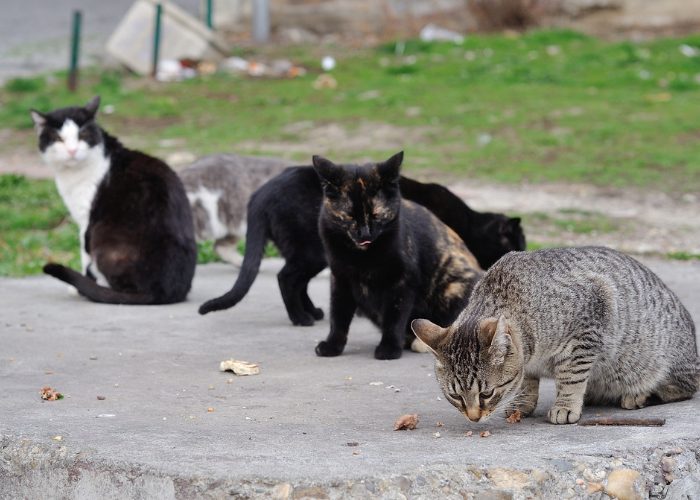
Why is it important to differentiate between Stray Cats from Feral Cats?
As you read this article, you might start asking yourself, Why is it important to know the difference between stray and feral cats?
The answer is simple. You will be able to help these cats more by knowing and understanding their difference. It can assist you in determining the best approach to care for, help, and protect them.
Besides that, it will also be dangerous for your part if you come to war unprepared. Thus, it's always best to be equipped and ready for unforeseen incidents that may come between you and the stray or feral cat you are trying to help.
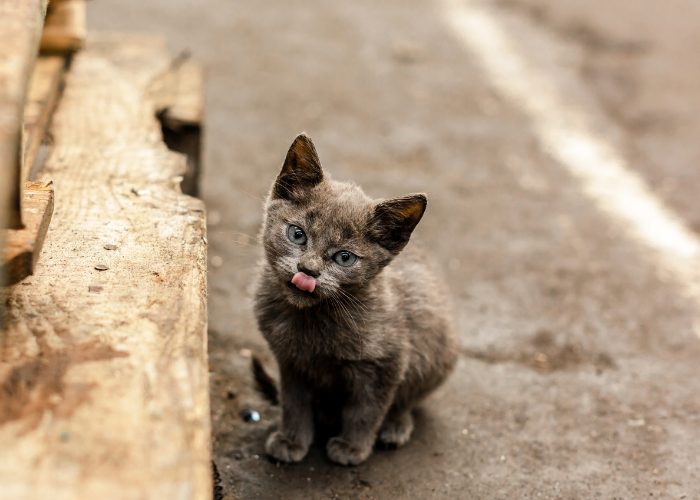
Identifying A Stray Cat Vs. Feral Cat
There are several ways to identify a stray cat from a feral cat. However, three of the most apparent clues are their physical appearance, temperament, and socialization skills.
The Difference in Physical Appearance
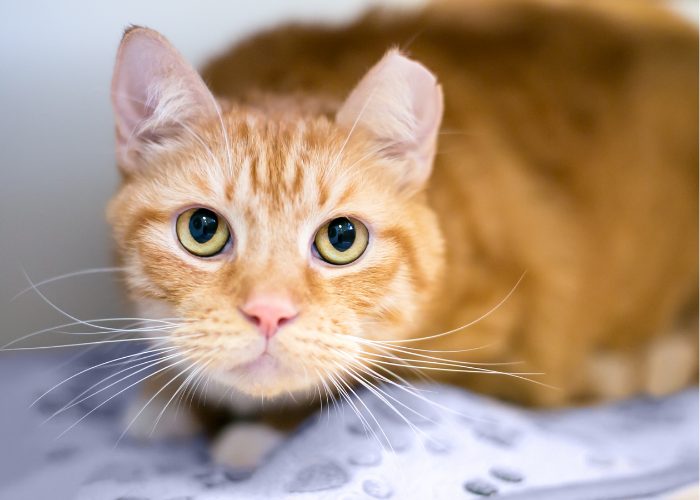
1. Feral Cats Have Tipped Ears
Suppose you've seen a cat with the tip from one of its ears gone. You might assume that they have been in a nasty fight or accident.
Although this might be true, it's also possible that this cat has experienced the practice of ear-tipping or ear-notching.
Ear-tipping is a compassionate means of indicating that a feral cat has been neutered or spayed in standard sterilization operations.
Furthermore, because they are harder to approach than stray cats, they are harder to capture for spaying and neutering.
In contrast, stray cats have regular ears as house cats as they don't need this indication.
Thus, if you see a cat roaming around the streets with untipped ears, its chances of being a stray cat are high.
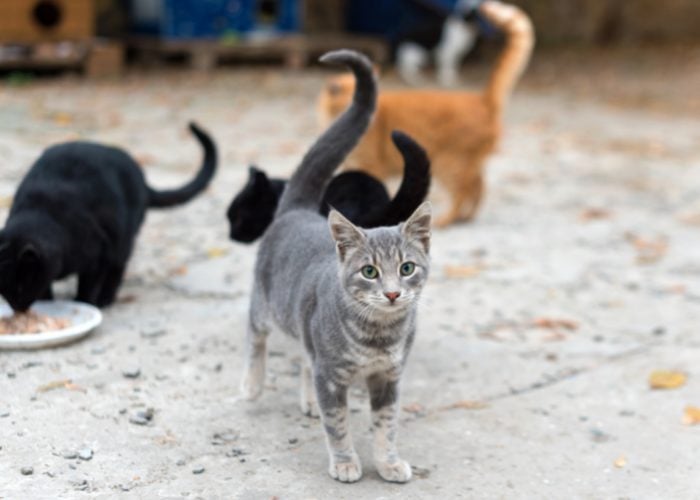
2. Feral Cats Are Cleaner Than Stray Cats
Typically, stray cats resemble the profile of an animal that has not been cared for. Since they were under the care of a human for some time, stray cats don't easily adjust out-of-doors compared to feral cats.
On the other hand, living outside is natural for a feral cat. Since most of these cats have survived all of their lives without a human's supervision, they have more experience being on the streets.
Thus, considering they're used to taking care of themselves since they were young, feral cats are generally spotless. In contrast, stray cats are more likely not to be well-groomed despite their efforts to be neat and clean.
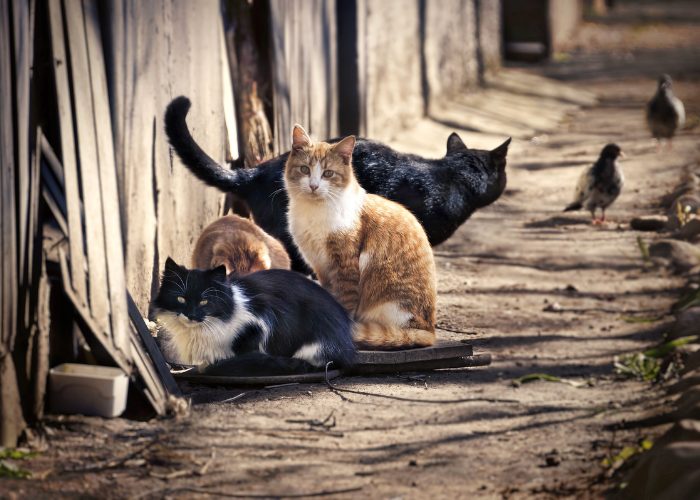
3. Feral Cats Are Bigger Than Stray Cats
Assuming that stray cats are well taken care of in their home before they are lost, they will look healthier and fitter than feral cats. However, in reality, the latter is more prominent than the former.
Feral cats, in most circumstances, manage to acquire the majority of the nutrients they require for daily survival. Thus, they tend not to suffer from malnutrition as stray cats would.
The main reason for this is the feral cats' quick adaptability to their environment.
Most stray cats have been spoilt and pampered inside their home. Thus, once they get the taste of living in the wild—in this case, the streets, they would have several ups and downs when it comes to surviving.
On the other hand, feral cats are more used to the said environment. They know which place to look for food and whether they should eat it or not.
Furthermore, since feral cats are more accustomed to the herbs growing in the city, they will eat more of it than stray cats.
However, although rare, feral cats are more likely to kill and sometimes eat mice, birds, and frogs compared to the latter.
Difference in Temperament
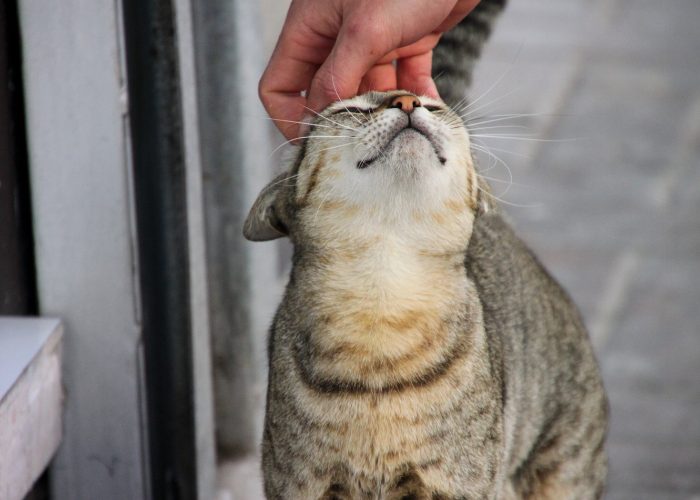
1. Stray Cats Are More Dependent Than Feral Cats
The most noticeable feature between stray cats and feral cats is the latter's latter's state of self-sufficiency.
As mentioned above, unlike stray cats, feral cats are not dependent or semi-dependent on humans. Stray cats may ask humans for food, but that's not the case for ferals.
Since feral cats are expert hunters who prey on tiny rodents and birds, they can scavenge dead animals' corpses and rummage garbage cans for food remnants.
If it's their turn to drink water, they can get them from gutters, puddles, ponds, birdbaths, and other water sources.
Furthermore, seeking shelter is not a problem too. You can often see feral cats seeking refuge in alleyways, abandoned buildings, trees, caverns, or any structure that would give a cover and windbreak.
They may wander searching for food and water, but they frequently claim their resting areas by urine marking them.
Cats who become more tolerant of humans may seek refuge beneath carports and porches.
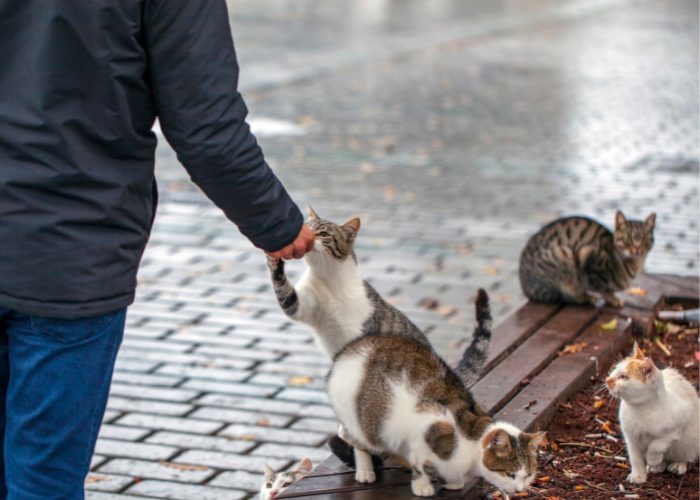
2. Stray Cats Are Friendlier Than Feral Cats
As aforementioned, stray cats are domestic animals that do not appear to have an owner. Some of these cats have either lost their way to their homes or their family neglected or abandoned them.
Stray cats tend to spend most of their time in popular hangout spots where food is available. You can find them in blind spots near restaurants or grocery stores.
Sometimes, these cats live in a colony or on their own. Cats that tend to be aloof try to live by themselves, whereas cats who like to be with other cats join certain groups.
Although their preferences have pros and cons, each has the same purpose: to protect and secure their territory.
Stray cats who are more familiar with their place tend to be more friendly with humans. Furthermore, since they spend more time on the street, they know which people they encounter tend to give them food or pass them.
These cats would either bring a human's attention by meowing at them or brushing their body against them.
In contrast, since feral cats are domesticated animals that go back to living in the wild, they are more cautious than stray cats.
They generally move in stealth mode, with their body and tail huddled low to the ground while their eyes explore the surroundings quickly.
Furthermore, these cats are more apt to avoid touch at all costs, and even eye contact is impossible.
As a result, it's harder for feral cats to approach humans and cats alike.
Although some stray cats tend to be curious about a feral cat, most avoid one to steer from sudden catfights.
However, don't be mistaken. Feral cats are not aggressive animals.
They are just scared of interaction because of the lack of socialization.
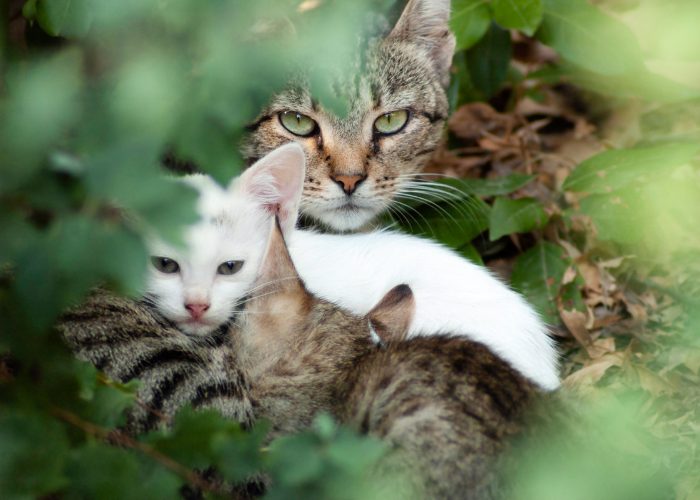
3. Feral Cats are Fearful Cats
As you've learned above, feral cats tend to steer away from anyone who tries to approach or touch them, which makes them fearful cats.
These cats may act hostile to you whenever this happens by either growling, hissing, or yowling at you. Sometimes, they would even smack their tail on the floor or an object near them to indicate their disapproval.
Despite that, it doesn't make feral cats aggressive cats. These cats are not used to interactions; thus, they are more cautious of their surroundings.
Consequently, their unfriendly nature roots in their need to protect themselves.
Let's take a couple of scenarios, for example.
When someone takes in a stray or feral cat in a cage, both cats have different reactions to it.
A stray cat may come to the front of the cat and may start meowing. In contrast, feral cats will retreat from the front of the cage and constrict themselves at the back.
Furthermore, since the stray cats are more used to being caged, they will start exploring the limited space and check up on the food and toys you give them.
However, that isn't the case for feral cats. The longer these cats stay inside their cage, the more likely to be scared or anxious.
As a result, they would ignore all the food or toys you present to them.
Thus, if you are planning to cage a feral cat, make sure to learn how to do it first.
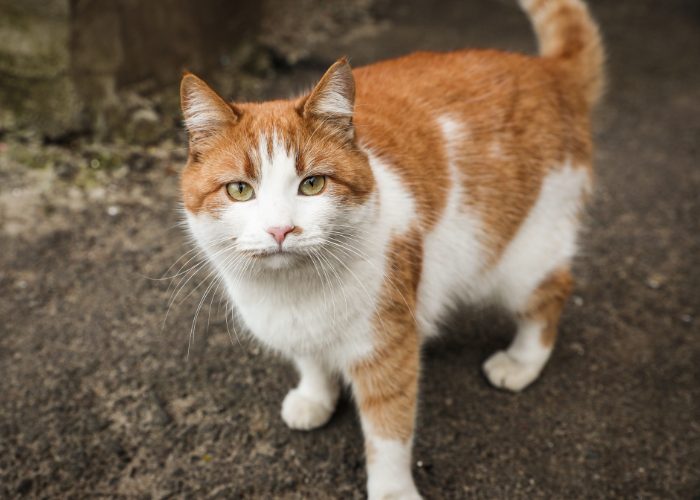
What should I do if I find Stray Cats or Feral Cats?
Although these cats have been living in the street for a long time, sometimes, they still need a human's help, especially in cases where they cannot fend for themselves.
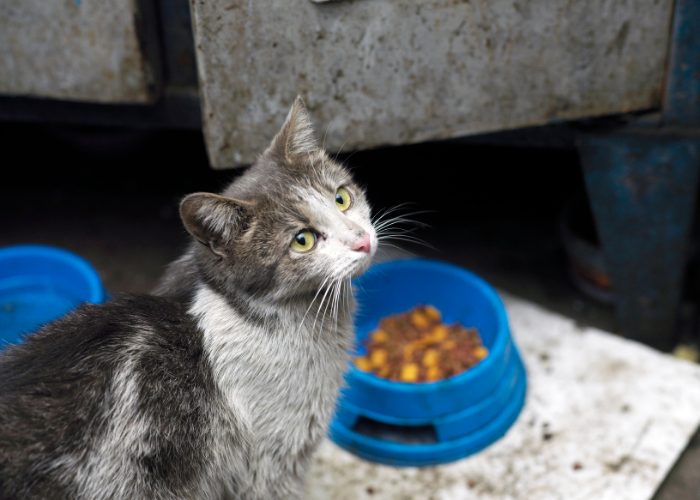
1. What should I do if I find a HUNGRY stray or feral cat?
Cats are carnivores, which means they consume meat. If you don't have cat food on hand, give adult cats tuna or cooked meat.
However, bear in mind to feed them only with the necessary quantity. An abundance of food will attract other stray animals from surrounding areas.
Furthermore, it would be best if you also feed these cats out of the public's eyes. Giving them their food in the middle of the street or other people's presence is distracting for some cats.
In addition, you must also make it possible for clean water to be available for the cats. Avoid giving them milk, especially cow's milk, since most cats are lactose intolerant.
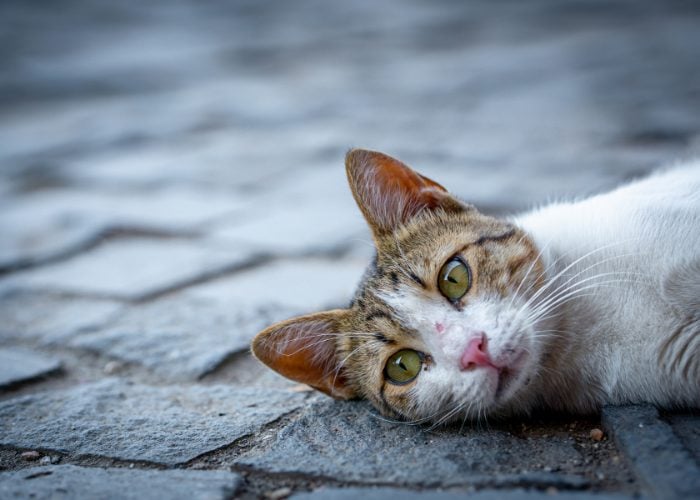
2. What should I do if I find an INJURED stray or feral cat?
If you find an injured stray or feral cat, consult a reputable, cat-friendly veterinarian immediately. Discuss the cat's condition first by sharing photographs or videos with the veterinarian to determine what action they can take.
However, if the cat only has minor problems, it's okay to let them recover by themselves. Remember, capturing and trapping is a traumatic experience for community cats.
Thus, calling a veterinarian first to assess their condition is the first thing you must do in this type of situation. However, it must only be when it is necessary.

3. What should I do if I find a PREGNANT stray or feral cat?
Suppose you found a pregnant stray or feral cat. You must assess the situation first by how this mother cat is handling their pregnancy.
But before you can do that, you must distinguish if you're looking at a stray or feral cat.
Assuming the pregnant cat is a stray cat, you can call the local cat rescue so that they can guide you on what to do.
However, if you are dealing with a feral cat, the local cat rescue will determine their best action on them as well. Bear in mind to not approach the feral pregnant on your own, as they can act hostile towards you.

4. What should I do if I find a pregnant stray or feral cat IN LABOUR?
If you come across a pregnant cat that appears to be in labor, please give her plenty of room to avoid upsetting her.
You may also assist her by providing a small dish of food and water to eat and shelter to rest. Do all of these things with little to no disruption.
Furthermore, don't hesitate to contact a local animal rescue facility for guidance on what to do when the kittens arrive. But keep in mind to avoid upsetting the mother since she may cause needless complications for the kittens.
Many cats give birth without any assistance. However, here are some indicators that the mother cat is experiencing trouble:
If she appears distressed, she will appear sluggish and produce an unpleasant discharge from her vulva. Though green, brown, or red discharge at the kittens' birth are normal.
Furthermore, if she does not produce a kitten between 30 and 60, even with excessive straining, it is also possible that a kitten or kittens are stuck in their birth canal.
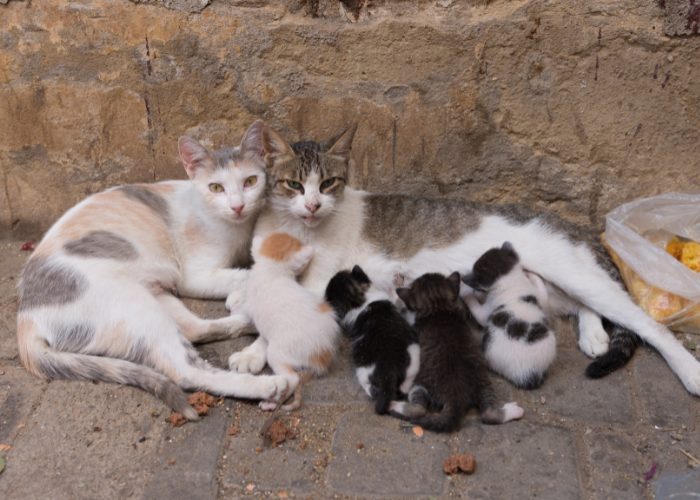
5. What should I do if I find a mother stray or feral cat with KITTENS?
Consequently, if you find a mother stray or feral cat with kittens, leaving them alone is a better choice, especially if they are already in a secure location.
It is critical not to transfer kittens, or their mother, as moving them may endanger them. Unless they are in danger, such as appearing to be sick or injured, then you must call a local animal shelter for assistance.
Bear in mind that the mother and newborn kittens must remain together even when the local animal shelter is moving them.
Final Thoughts on Stray Cats vs. Feral Cats
Most of us tend to feel empathetic whenever we see a stray animal roaming around the streets looking for food and shelter. Although we wanted to help them, we don't know where to start yet.
Thus, identifying the differences between a stray and a feral cat is crucial in helping them. Knowing these disparities, we will learn when and how to approach them, especially when giving their wants and needs.
READ NEXT: The Evolution of Cats: Knowing Our Favorite Furry Friend
WANT TO SHARE THIS…














